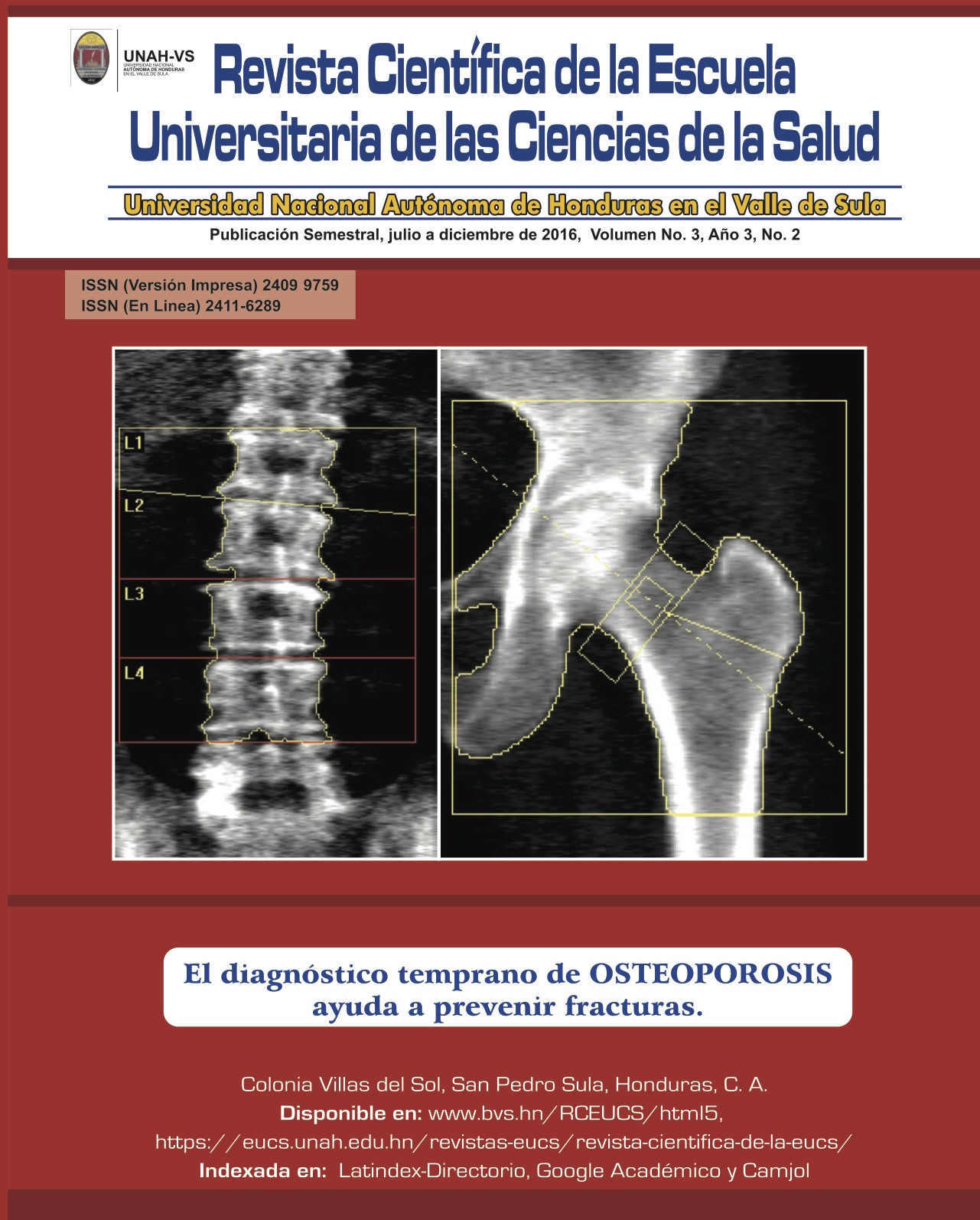ENTEROBACTERIAS RESISTENTES A CARBAPENEMICOS EN EL HOSPITAL MARIO CATARINO RIVAS DURANTE EL PRIMER SEMESTRE DEL 2016
DOI:
https://doi.org/10.5377/rceucs.v3i2.7044Resumen
Introducción: El notable aumento de las infecciones producidas por enterobacterias resistentes a carbapenémicos (por sus siglas en ingles CRE) y su impacto negativo en las temáticas de salud, han generado preocupación y han sido motivación para investigar la epidemiologia propia. Objetivo: Determinar la prevalencia de las CRE y los sitios de aislamiento más frecuentes en el Hospital Nacional Mario Catarino Rivas (HNMCR) desde el 1ero de enero al 30 de junio del 2016. Metodología: El estudio fue de tipo descriptivo, transversal, se obtuvo los datos de los libros de registros diarios del departamento de microbiología, según la definición recomendada por la Centro para el Control y Prevención de Enfermedades (CDC) utilizando parámetros de sensibilidad de la Clinical Laboratory Standards Institute (CLSI) M100 S24 Resultados: Se reportó el aislamiento de 696 enterobacterias de las cuales 71(10.2%), cumplían la definición de la CDC para CRE; Klebsiella pneumoniae 21 (29.58%), Enterobacter aglomerans 20 (28.17%) y Escherichia coli 12 (16.9%). Las salas de emergencia de cirugía, cirugía de hombres, cirugía de mujeres, medicina interna de mujeres y lactantes presentaban cada una 4 (5.63%) casos reportados, haciendo un total de 27.65%. En abril se reportaron 15 CRE (21.13%), aislándose principalmente en urocultivos 26 (36.6%). Conclusiones: Klebsiella pneumoniae fue la CRE más prevalente en HNMCR. Abril fue el mes con más reportes de CRE y el urocultivo fue el sitio de aislamiento más frecuentemente reportado.
Palabras clave
Diagnóstico, Enterobacteriaceae, Epidemiología, Microbiología
Descargas
842




